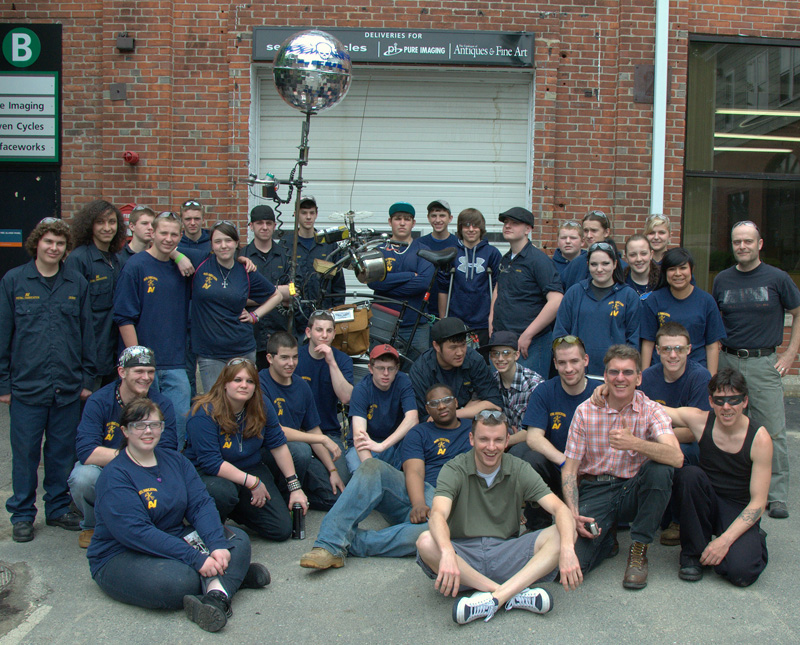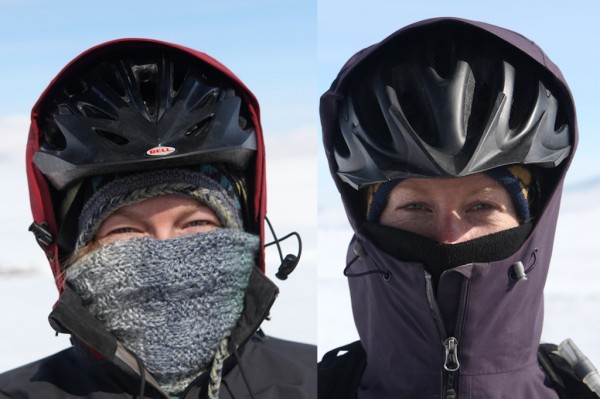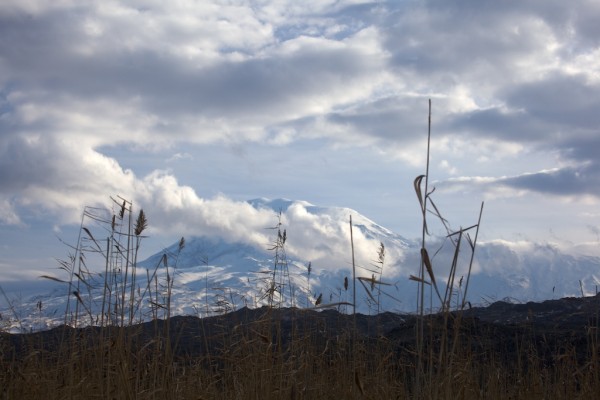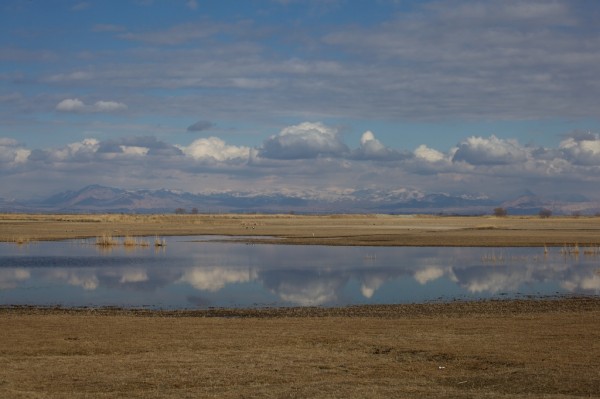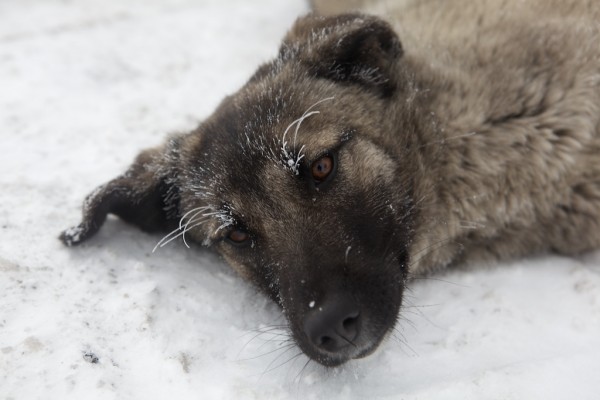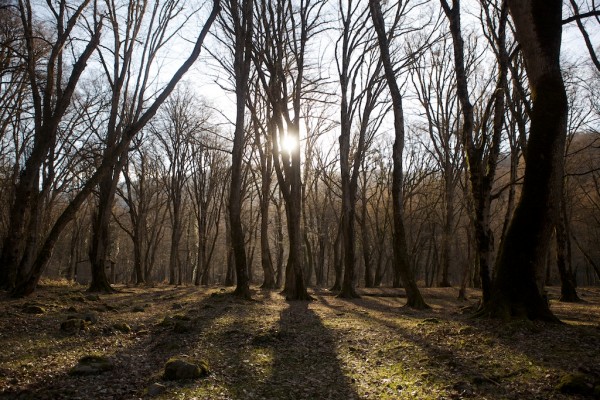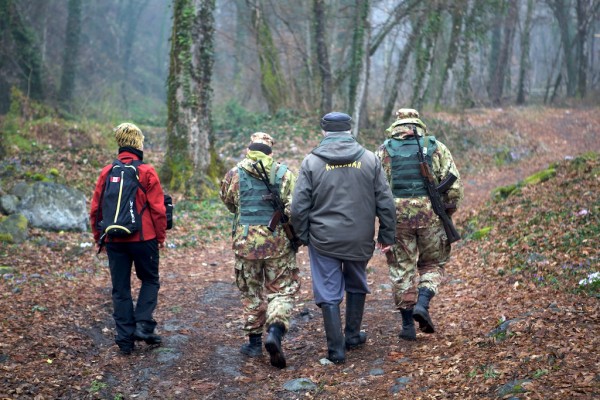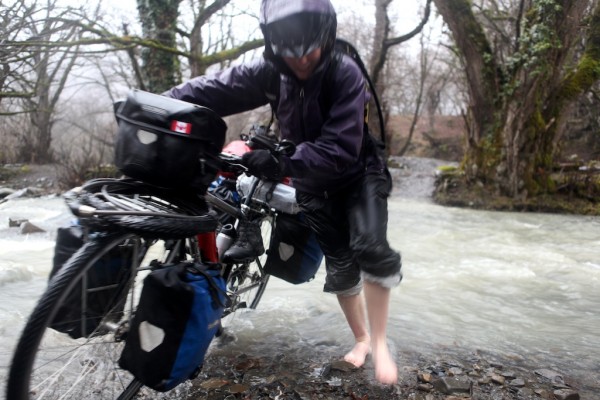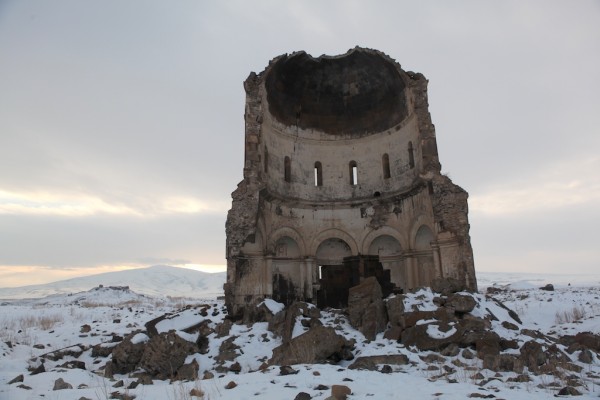Neil Mansfield is a friend of Seven and was a coworker of ours back in the day when several of us worked at Merlin. He has since become a favorite teacher to many kids at a technical high school in the suburbs west of Boston, where he teaches welding, metal fabrication and blacksmithing. Every year Neil takes a group of very excited students on a field trip to Seven. The kids are not only excited to be out of school, they genuinely seem to enjoy spending time with us in the shop. They ask lots of questions: everything from how much a frame costs to how to get a job at Seven when they graduate. The highlights every year are our welding demo and Skunk, our resident bicycle chopper gang leader.
Author: Seven
Elle Decor – Celebrity Style: Shortlist: Glen D. Lowry 12 things MoMA’s director can’t live without (excerpt)
Written by Ingrid Abramovitch
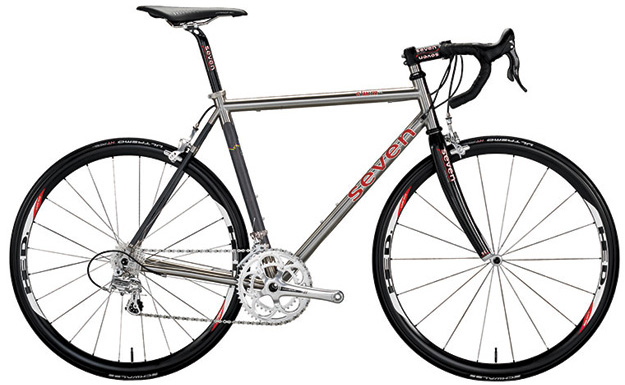
With an apartment in New York’s Museum Tower, Glenn D. Lowry, director of the adjacent Museum of Modern Art, doesn’t literally live above the shop—but just about. “I have a 400-foot commute,” he says. “I love it.” If he burns few calories getting to work, he more than compensates with his spare-time pursuits: This former bike and ski racer still engages in both sports with vigor. Married since the age of 19 to his wife, Susan, a Montreal-born landscape architect, Lowry was enrolled as a pre-med student when he took a freshman course in Islamic and Indian art at Williams College. “The first slide went up, and I never looked back,” says Lowry, who became a scholar of Islamic art before assuming leadership of the Art Gallery of Ontario and then MoMA. “This is an utterly thrilling, enjoyable, engaging job,” he says of his role as head of one of the world’s most beloved art institutions. “It tests all of your skills, all of the time.”
1. Seven Cycles Road Bike (Elium SL)
A well-made bike is a thing of beauty—and less expensive than a midlife crisis.
More info on the Elium SL
Departures: Must-Have Bikes for 2011
By Glenn E. Bo
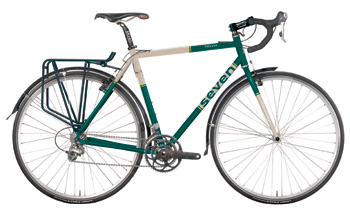
After a memorable winter that bestowed an unusually high amount of snow upon us here on the East Coast, country and city roads now beckon, and they have never looked more appealing. If you’ve spun the winter away on a stationary bike or are still hibernating in a gym, awaiting warmer weather, give yourself a nudge and head over to the nearest bike shop. Even if you’re content with your current ride but have yet to roll it out the door this season, a visit pays dividends, for there’s nothing like the smell of a bike shop in spring to motivate oneself to hit the road. A caveat: The scent is intoxicating and you may return home with a new bike, which is not necessarily a bad thing, especially if it’s one of the bikes featured here.
If you’ve ever longed to throw your legs across a custom bicycle, 2011 is the year to realize your dream. Custom-built frames, tailored to your body and riding style compete effectively on price with higher-end offerings from larger manufacturers, provided the components are selected wisely. Clothes are tailored, cars are optioned and living spaces are fashioned to suit one’s personality, so why overlook something as personal, functional and beautiful as a bike? There’s a new crop of builders creating stunning machines that won’t require riders to be on a waiting list for years.
No one bike does everything well (though some come close to being great all-around performers), so if you can have only one bike in your stable, be sure it’s designed around the type of riding you do most often. While we lust over the latest carbon and custom offerings just as the Tifosi do with the release of each new Ferrari, we know that staying focused yields a two-wheeled companion that will see the most use and deliver the most enjoyment over the long haul.
We were once told that “adults don’t take three-hour bike rides—only kids do.” But choose the right bike and three hours will seem like child’s play. Whether you’re new to road riding, an enthusiast looking to upgrade or a club rider seeking more performance, the bikes on this list merit attention and will perform admirably. It doesn’t hurt that they also have looks, performance and personality to boot. The only thing they lack is you.
Made-to-Measure: Seven Cycles Halcyon
Touring cyclists, take note: This could be the last bike you’ll buy. Seven only sells frames and, in tandem with your local dealer, you provide it with all the measurements and data it needs, in addition to completing its exhaustive questionnaire, to tailor a frame specifically for your body. When completed and shipped to your dealer, you choose the optimum components to complete the bike. Seven also utilizes manufacturing methods dedicated to minimizing environmental impact for a truly green ride. Specify cantilever brakes for assured stopping power—that is, if you ever want to stop.
Road Magazine: Lucky Number Seven
By Peter Easton
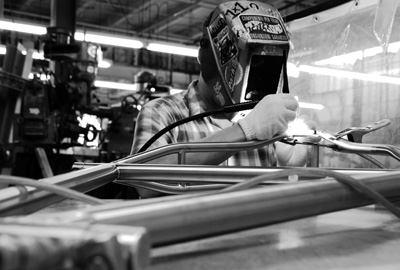
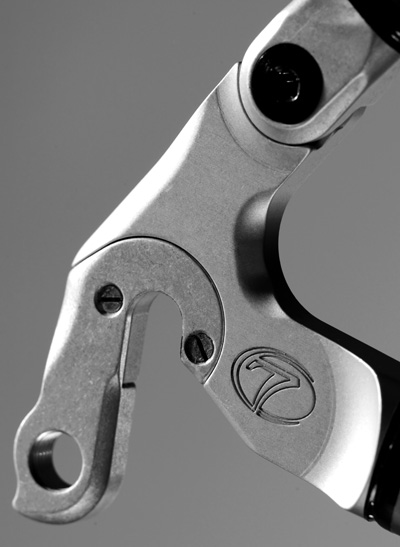


In the contemporary world of bicycle manufacturing, the majority of artistry that defines the mainstream production of a bicycle can be found primarily in glossy advertisements and flashy animated websites. In some instances, the actual product consists of very little art outside of a paint job. For some factories and warehouses, their stalls are filled with endless rows of frames hanging in repetition, barely distinguishable from each other. The art of framebuilding has seen many pioneers, those artists and sculptures who set out to carve their niche in a specialized segment of the industry, each with their own talent, materials and eventually, customer loyalty that helped fill orders and spread the word. But it’s no secret that a life as a framebuilder is a labor of love, and not the glamorous lifestyle some photos may portray. Tight margins, endless hours and demanding customers are just a few of the issues the struggling torchbearer has faced, and many have folded, with little success as a business.
Toward the end of the 1990s, a significant shift in frame building and materials was in full swing, and titanium had become the exotic metal everyone had to have, and few builders had expertise in. Light, resilient, compliant and with a high strength to fatigue ratio, titanium bike manufacturing sprung up across the country in an effort to capitalize on the demand, explore new possibilities, and advance the development of an emerging technology. While many looked closely at how to produce a large number of frames with cheaply sourced titanium, one builder felt the time was right to take a larger look at how to develop the infrastructure to build a large number of frames one at a time.
Rob Vandermark is not your typical CEO. His vision for creating a custom bike manufacturing company was born mainly out of a desire to streamline a production process that had succeeded in effectively removing the art and artistry and ultimately one of the most beautiful aspects of a bike: the hand built custom frame. Prior to founding Seven in 1997, Vandermark worked as head of Research and Development at Merlin Metalworks, a pioneer in titanium frame building. Vandermark’s ten years at Merlin enabled him to work in all aspects of bicycle frame building and design, from machining and welding to product development and process improvement. At the close of 1996, Vandermark decided the time was right to leave Merlin, mainly because the company began focusing on the mainstream market at the same time he was becoming more interested in pushing the limits of bike customization, technology transfer, and the Toyota Production System, a manufacturing philosophy based on the single piece flow theory, which is production only commences when an order has been placed. “ I really wanted to see how these three ideas could converge in a new and successful way and four of us started Seven in January 1997.” The rest, as they say, might be categorized as history, but behind the gloss of every titanium, steel and carbon bike there is a business philosophy that has been strictly adhered to, and a mindset that has fostered Seven’s success and proven Vandermark’s thinking to be groundbreaking, some would even call, revolutionary. The success of customization relies on optimization.
Many bike companies boast what their bikes do for the professionals, or what the pros do with their bikes, but fail to tell me how it benefits me. After all, who is it that is actually buying the bike? The trickle down theory doesn’t work here. Many of these bikes are built with a very short shelf life, with effort put into maximizing every last ounce and dropping every last gram of weight to put forth a frame that, on some occasions, is raced very few days out of the year. Misleading the consumer is a poor sales tactic, and one that is primarily based on undercutting competition and creating a distraction that keeps one from looking too deep at the product. Many companies claim to have the latest and greatest technology, but how did they arrive at a point where they need wildly stupid graphics, insulting and sometimes perverse language, and offensive imagery to sell? My feeling is if you are causing a distraction, it’s because you don’t have enough behind what you sell. (All I need is to see Tom Boonen in a gladiator suit, or Alberto Contador meditating and levitating in a toga to be reminded of this.)
While the major players get the majority of exposure based on market saturation—pro team sponsorship, full-page ads in magazines, cover shots for, and the majority of, bike reviews—it begs the question—where does the smaller guy fit in? Bikes designed and built for the pros are built to be raced aggressively, with no concept of warranty or longevity issues. Do you really want a bike that may fail after a year, simply because it makes a claim that it is the lightest, or it’s ridden by the top riders? I sure don’t. It is the little guy that is holding onto principles he believes in, not hiding behind misleading ads. These are the guys that are in the business end of the sport because they not only love eh sport, but they love what they do, and don’t feel the need to spend dollars on amateurish ads and marketing that is an insult to the sport and my intelligence. We read war language on the front page of our newspapers every day. Do we really need it to sell a bike? I hope not.
Entering the Seven factory, one would be forgiven if they missed the front door, or thought they were a bit lost. Occupying 15,000 feet of warehouse space in the industrial neighborhood of Watertown, MA, there is no grand lobby, no “wall of fame” with autographed jerseys, framed photos of bike celebrities or life size cutouts of the latest rider to promote their latest bike. The office area is stuffed with a hard working crew of dedicated self-thinkers, meshing effectively to work in a non-hierarchical system that encourages freethinking, production and process analysis and criticism with the goal of producing a product they are proud of. There is an unassuming sense that behind all this work is fueled with an uncompromising commitment to excellence framed by an obsession to detail. Perfecting the infrastructure of manufacturing and incorporating flexibility into the process enables one bike to be built at a time with 100% attention from its builder, and is the success behind the single piece flow manufacturing theory. The exacting standards that have been incorporated into a production model that is lean, efficient and customer-centric is the foundation for any measure of production success at Seven. One of the more interesting elements is that there is no set production schedule for frame building. The factory is set up to handle the cutting, bending, shaping and welding of materials for a variety of framesets, so as a bike is designed and ready to be built, it is simply put into the cue for production. But the word production sounds robotic, reeks of an assembly line mentality that removes the personality, the human element, the artistry. Not so at Seven. Standing on the factory floor, no less than eight employees manned their machines, each reviewing a manila folder with CAD drawings and specifications, a small box containing tubeset not far away. This box of tubes, and its folder is passed on after each stage of work is completed. Seven’s machinists strive for 100 percent accuracy in every part they work on and each frame undergoes a series of alignment checks throughout the welding process. Seven boasts having the tightest tolerances in the industry, and watching the craft first hand, it is apparent that this is a worthy claim.
The factory floor itself is a maze of machinery, mobile bike jigs, and individual welding stations. Mattison Crowe, Seven’s Director of Marketing, explained the production theories behind the success of Seven, and while this was not my first visit, it is always refreshing, educational, and inspiring to hear the specifics. Customization and optimization are the key words at Seven, and some might even call it their philosophy. While optimizing the tube sets for performance, and customizing the fit and build for each customer is the key to success for a custom bike manufacturer (Seven), without an optimized production methodology, much of the process, and the ability to offer such a range of customization, would be lost. Seven’s approach to customization is unusual, and consists of five elements: Fit and Comfort; Handling and Performance; Tubing and Materials; Features and Options; and the Future. The custom fit is just one small piece of the overall design, as the designers invest plenty of energy in customizing and optimizing the bike’s tubeset, ride characteristics, handling, performance aspects, and aesthetics. From a manufacturing standpoint, having each of Seven’s framebuilders focus on only one bike at a time, there exists better quality control, fewer defects caused by mass production, more efficiency, and more opportunity for innovation and product and process improvements. This is the underlying success in a more customer-centric philosophy.
For me, there is an art in this, there is a vision that embraces innovation, but relies on human excellence for its success, and the communal efforts of committed cyclists, artists, businesspeople and designers. There is an effort, and success, in breaking down the barriers of intimidation and miscommunication and eliminates the pretension that exists at so many levels within our sport. One of the most refreshing aspects of Seven is the commonality of love for the bike. Every bike. Every bike ride. Every bike rider. For some companies, their success is built largely on race frames. For others, it’s touring frames. Yet others may only make mountain bikes. Seven embraces it all, and holds every customer, every customer, every type of rider as equal and important as the next. Business philosophy, yes. Successful. Darn right. Embracing the lifestyle of the bicycle, not isolating those who don’t fit into a predetermined image or category. Many companies offer a tag line, and then fail to live up to it, change it to meet market demands, or simply cut corners all together. At Seven, it’s “One Bike. Yours”. And once you have one, trust me, you will want another.
Ride. Rest. Repeat.
Vandermark’s passion for cycling, and his business savvy, extends beyond Seven. Promoting a friendly environment within the cycling community, the Ride Studio Cafe, in Lexington, Massachusetts is a unique combination of high end bike shop and sophisticated coffee shop, creating a social environment that welcomes cyclists, coffee drinkers and passers by to engage with each other—something cyclists typically have a hard time doing. Lexington is well known as a Revolutionary War centerpiece, and as I drove Massachusetts Avenue, I immediately felt that New England charm, even though it was decorated with three-foot high snow banks. A quiet midweek afternoon did not damper the social enthusiasm of the Ride Studio’s Andrea Smith, the engaging, and so I learned later, very talented cyclocross rider who is also the shop’s mechanic. Andrea seems to exemplify perfectly the theme of Ride Studio Cafe, with a relaxed demeanor that can put the most cynical New Yorker at ease in a very short period of time. Her brilliant smile brightened an otherwise gray day.
Well caffeinated from lunch, and unwilling to risk a midnight caffeine rush, I passed on sampling the excellent brew that was available and being masterfully poured by David Simon, who to my surprise, greeted me by name, before informing me that Rob had just phoned from Seven to tell them I was on my way. Just another way of making the customer the centerpiece.
In an ideal world, the Ride Studio Cafe will continue on its rising trajectory and become a highly successful store that will spawn siblings and eventually find it’s way into the New York Metropolitan area. Until then, Seven, and RSC seem content to keep working at changing the world one bike at a time.
Cycling Silk: Explaining Borders to the Birds
By Kate Harris
This is the third in a series of articles documenting Cycling Silk, A year-long research expedition across Asia.
In the world of strict plans and fixed agendas, detours are just distractions. But on the Cycling Silk expedition, detours often prove the destination – and not just because we frequently get lost. So when KuzeyDoga, an award-winning Turkish NGO, invited us to explore their biodiversity conservation projects in the borderlands of eastern Turkey – wooing us with wild animals, wide open spaces, and a visit to a Turkish bath – we knew it would be worth diverting from our intended route for a visit. After all, we hadn’t showered in a week.
So we steered south, away from the Black Sea, and began climbing onto the Kars Plateau, swapping heavy rain for heavier snow along the way. The roads grew so slick with ice we had to work twice as hard to go half as fast. Sometimes we couldn’t bike at all. Climbing a pass during a blizzard, the snow not so much falling as firing, flakes sharp and aimed as arrows, the police stopped us and made us cross the pass in a truck (driven by Osman and Mustafa, of course.) At least the heated cab offered respite from the snot-crackling, lung-stiffening cold. Surviving on the bike in such conditions required cartwheel breaks to centrifugally force blood back into extremities. While I exulted in this suddenly polar world, cryophile that I am, Mel may never join me on another winter adventure again, even if she someday thaws out from this one.
Whether because of the cold or despite it, we fell in love with Kars. The Plateau is a territory of enchantment: foxes loping across plains wide as thought, owls patient as stone on signposts, mountains giving cold shoulders to the world. A place more sky than earth, no wonder it set us soaring. We had good company up there: slow-reeling vultures, skinhead buzzards, fang-billed falcons, and many other birds populate Kars skies. Since we visited in the cold heart of winter, though, most vagrants of the air were off sunning themselves at the equator. Birds of prey migrate by skipping like stones from thermal to thermal, rising on one column of hot air and gliding down to the next forming, back and forth to Africa, Europe, and India, stopping in the South Caucasus along the way. If only bikes could be physically powered by the same principle.
While territory is an instinctive concept for birds, the political divides we map onto their habitats are meaningless to them. There’s no explaining borders to the birds; they fly far above our fences. But even so, fences define boundaries, however arbitrary, that can fragment the habitats where birds stop to breed and feed during migration. This is especially true of the borderlands where KuzeyDoga works, including the Aralik-Karasu marshes skirting the base of Mount Agri (aka Ararat), on the border of Turkey and Iran, with Armenia and Azerbaijan nearby.
Legend has it Noah’s Ark first struck dry land on Mount Agri/Ararat’s summit, and the rich biodiversity here seemed to fit the story of a bunch of creatures spilling out of a boat. Down off the Kars Plateau, the wetlands rarely freeze, an oasis of iceless water and grass in the cold South Caucasian winter. But as fertile land, the marshes risk of being drained for agricultural use in one or more of the countries involved. What one country does with its wedge of wetland impacts the rest, so keeping this ecosystem intact requires a cross-border approach. That’s no simple task for countries in protracted conflict, as they are in the South Caucasus.
But when politics is the barrier, transboundary conservation is possible, at least in some form, through transboundary communication: individuals and NGOs talking across contested borders, sharing data and ideas directly or indirectly, and where possible, harmonizing approaches to nature protection in each place. This helps protect biodiversity as much as possible in the short-term, given politics, and builds a robust case for more formal transboundary cooperation down the road, once political situations improve. So peace, however desirable, is not a prerequisite for conservation across borders – and good thing, because in many places, we can’t afford to wait.
If explaining borders to birds is an exercise in absurdity, imagine us trying to explain, using only hand gestures, to people who already think we’re nuts, exactly what it is we love about being cold and dirty on the back of a burdened bike for months on end. The answer, at least in part, is how transcendent a Turkish bath feels after a grimy stint on the road. Scrubbed clean down to different people, we thanked KuzeyDoga for a fantastic visit, and promised to return to the Kars Plateau someday – in summer. Then we hit the road to the Democratic Republic of Georgia.
The weather continued to be frightful, cold as bones, but we soon acquired a companion who warmed our hearts, if not the rest of us. At the top of the final pass, close to the border, a dog materialized out of cold mist, wagging her whole body and batting iced lashes at us. We patted her and offered her trail mix; it was that or raw oatmeal and pasta. She shunned our food, for good reason, but ate up our affection, and when we biked away, she galloped along behind. We named her Baklava, and welcomed her to the Cycling Silk team. Alas, just a few hours later, Baklava was dognapped by her so-claimed owners. Probably for the best, since smuggling her across the border would’ve been tricky, but such is the twinned happiness and heartbreak of this journey: making new friends, then moving on.
A few days later, on the far side of the Turkey-Georgia border, we reached the Caspian Sea sooner than expected. At least the puddles, swallowing the entire road and then some, made us feel suddenly at sea. So did the new language. Kartuli, the Georgian tongue, had us choking on consonants while pronouncing crucial words like gvbrdghvnit, which means “you tear us into pieces.” So that’s what wilderness has been saying to borders all this time! We couldn’t quite make it out until now. Fortunately for us, some people spoke English in Tbilisi, the capital city of Georgia, where we stopped for a few weeks to interview conservationists, scientists, and politicians about transboundary conservation in the South Caucasus. The WWF-Caucasus office generously let us camp out in their conference room during our stay in the city, and after sleeping on the cold ground for months, sleeping on a carpeted floor was the apogee of luxury.
But winter was waning by the time we hopped back on the bikes, destined for the Lagodekhi Protected Areas in the extreme northeast of Georgia. As we pedaled there, our legs and lungs bounced with all the spring in the air. After months of combating the cold, we could finally relax into the weather: it wasn’t going to filch a finger or toe from us when we weren’t looking. Snow still crowned the Greater Caucasus mountains, but the lower slopes were hackled in trees, trunks raised not in alarm but acclamation, branches shaking fists of buds in joy, or something like it.
The Lagodekhi Protected Areas, the oldest nature reserve in Georgia, is famous for its fairytale forests and ruins. We took a few days to explore Lagodekhi on foot, guided by Giorgi, a ranger at the reserves. On our hikes he wore a dapper shirt, vest, ranger jacket, hat, and rubber boots; we wore matching filthy outfits, carried far too many cameras and lenses and tripods, and staggered on legs more used to pushing pedals than supporting strides. But Giorgi was patient with us, if bemused by our compulsions to snap a photo every two steps and hug every second tree.
No wonder we looked suspicious to the Georgian border guards we met in the woods, on our way to Machi castle, ancient ruins on the Georgian-Azerbaijani border. But after checking our passports and establishing that we weren’t, contrary to appearances, completely mad – only partially and harmlessly – they relaxed and hiked along with us, happy for company on a lonely patrol. A few days later we showed our passports to some more border guards, then biked into the Republic of Azerbaijan.
Our first mission in Azerbaijan was to track down Zakatala, a Strictly Protected nature reserve running parallel to Georgia’s Lagodekhi.’ Track down’ turned out to be an apt expression: the paved road turned to calloused dirt, then a stream, then cobblestoned mud, then nothing but a river valley with forests and mountains beyond. No welcome signs, no fences, no interpretive center for visitors, as we found just across the border at Lagodekhi; just wilderness protected by its relative inaccessibility.
But locals still access the reserve illegally, according to people we spoke to, where they hunt, collect mushrooms, and chop firewood at the risk of huge fines. With few other means of income, they don’t have much of a choice, here or many other places in the South Caucasus. Everywhere we went, again and again, we saw how local people play such a crucial role in wilderness conservation, and how much environmental protection depends on sustainable development. Given the choice between going cold in the winter or chopping down a virgin beech for firewood, anyone in their right or left mind would take ax to trunk, no matter how much they love the forest. So if we don’t take care of people, the planet will suffer; if we don’t care of the planet, people will suffer. Both have to happen at once, and we’re all in this together. Whether we’re talking about birds or trees, you or I, here or there, we all inhabit the same spinning ark.
From migratory birds that breed in Mount Agri/Ararat’s meltwater to castle ruins growing forests in Lagodekhi, so many of the natural wonders we explored in the South Caucasus had a human, historical dimension as well. Riding the Silk Road through these places was intense schooling on the fact of flux: all the conquests and constructs of their storied pasts, all the countless people who lived and loved and grieved in their day, just as we do in ours, are nothing but legend and rubble now, nesting grounds for birds and fertilizer for forests.
Flux is the fact of wilderness conservation too, especially across the fickle and changing boundaries of politics. Conservation is not about preservation: it does not aim to keep nature static, fix forests in formaldehyde, establish isolated Protected Areas we can then walk away from, patting ourselves on the back for a job well and forever done. Instead, wilderness conservation is an act of perpetual vigilance and flexibility, a commitment to letting the natural world exist and evolve, across borders and through time, without an excess of human meddling. Because sweet air, clean water, rich soil – and by extension human health and happiness – depend on a biodiverse planet. Because every generation deserves the chance to cartwheel into cold wonder, get lost in a primeval forest, wake to birdsong raining on a tent. Because wilderness, like the Silk Road itself, is a place of instruction, with lessons to teach we can’t even begin to imagine.
Hiking around the Ani ruins in Kars, next to the Turkey-Armenia border, I swear I heard a door slam, somewhere deep underground. The noise said no road is long enough to learn everything I want to know, get everywhere I want to go. Not even the Silk Road, no matter how many detours we take. Genuine borders exist, biological and temporal, that none of us, however monied and powerful, can transcend. So maybe the best we can do, in this fleet and singular life, is follow the example of the birds, and seek out thermals: whatever makes us rise, tosses us aloft, sends us soaring.

